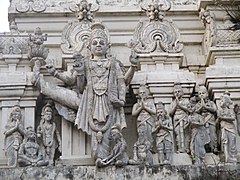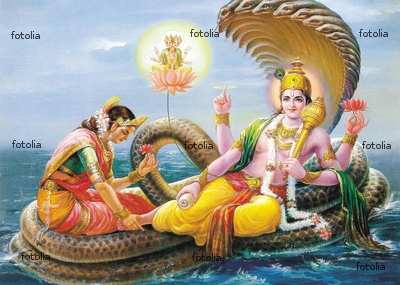
COMPOSER Bhoothath Azhwar |
|
|||||||||||||
|
Bhoothath Azhwar (also spelt Bhoothathalvar or Bhoothath Alvar) is one of the twelve azhwar saints of South India, who are known for their affiliation to Vaishnava tradition of Hinduism. The verses of azhwars are compiled as Nalayira Divya Prabandham and the 108 temples revered are classified as Divya desam. Bhoothath is considered second in the list of the three principal azhwars, with the other two being Poigai Azhwar and Pey Azhwar, collectively called Muthalamazhwargal who are known to be born out of divinity. Bhoothath composed hundred verses that are classified as Irandam Tiruvandadhi and his composition is set in the Andhadhi style in which the ending syllable is the starting one for the next verse.
According to traditional account, the first three azhwars belong to Dwapara Yuga (before 4200 BC). Modern historians place the period of azhwars from the 5th to 8th century AD, but the chronology and relation between each other is disputed. As per Hindu legend, Bhoothath was found in a liquorice flower in Thirukadalmallai (modern day Mahabalipuram. In Tamil, Bhootham refers to one who is possessed and since the saint was madly attracted to Hindu god Vishnu, he got the name.
As per legend, the three azhwars were once were confined in a small dark enclosure during a rain in Thirukovilur and they experienced a fourth individual among them. They found out that it was god Vishnu and Poigai wished to see his face continuously but could view only from the simmering light of the lightening. With a view to maintain the continuity of light, Poigai instantly composed hundred songs wishing light to emerge. Pey and Bhoothath continued composing hundred songs each on Vishnu. The works of these earliest saints contributed to the philosophical and theological ideas of Vaishnavism. Along with the three Saiva nayanmars, they influenced the ruling Pallava kings of the South Indian region, resulting in changing the religious geography from Buddhism and Jainism to the two sects of Hinduism.
|
||||||||||||||





